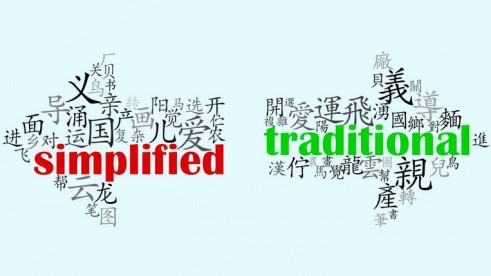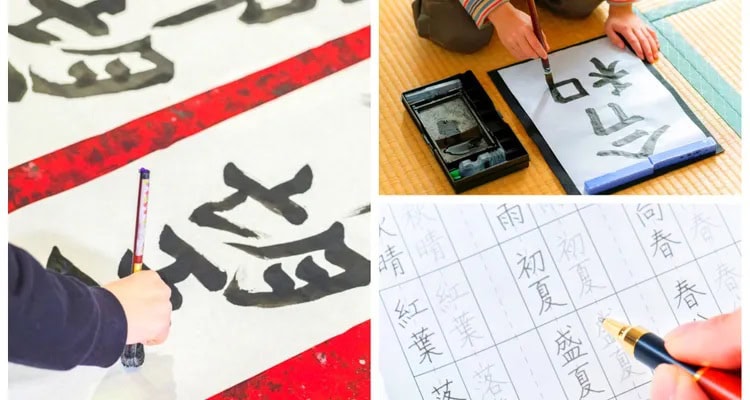Will your business benefit from access to China's 1,4 billion citizens? Do you plan to branch out and promote your goods and services there? If so, there's a lot you need to know, from the quirks of Chinese corporate culture to the usage patterns of the Chinese language.
As an experienced language service provider that has been doing professional Chinese translation for over a decade, Idichthuat would be happy to help you with language related issues. If you don't understand Chinese, we are here to help you with that, with Chinese translators and interpreters available to meet all your needs.
Even if you don't speak Chinese, and don't plan to learn, it's still possible to discover more about the Chinese language. We have reviewed Traditional and Simplified Chinese, explaining what they are, why and how they are different and what you need to use for your Chinese translations. If you are not sure whether you need Traditional or Simplified Chinese, then read this article!
+ Note: Cheap, Professional, Prestigious Chinese Translation
Definition of Traditional and Simplified Chinese
“Traditional Chinese” is actually an acronym, until the 1950s it was simply “Chinese”. However, creating a simplified version of the language written at the time required introducing a distinct method, hence the added 'traditional'.
The characters in Traditional Chinese are those that have been used for the written form of the language since the appearance of script writing during the Han dynasty. They have changed little since the 5th century.
Traditional Chinese is officially spoken in Taiwan, Hong Kong and Macau, as well as in China. The characters of this language are referred to by the Chinese in various ways, including 'standard characters,' 'orthodox characters,' 'complex characters' and 'full Chinese characters' enough'.
Besides, Simplified Chinese is a simplified version of Traditional Chinese characters. The government of the People's Republic of China in mainland China introduced this character in the 1950s. Today, it is used in China, Malaysia, and Singapore. These characters are very simple, many characters have fewer strokes than before, making it easier for learners to learn. Some of it is already quite simple so should be kept.
The introduction of Simplified Chinese to language learners has provided not only easier-to-write characters, but significantly fewer of them. For example, if Traditional Chinese contains two or more words with the same pronunciation but different meanings (''there', 'their' and 'they're' are examples of English), the version will simply use a single character for all words, instead of one for each word (as is the case with traditional Chinese).
Furthermore, the Chinese government remains officially committed to further simplifying the language. A second series of simplified actions took place in 1977. However, the resulting confusion and unpopularity of the new simplifications saw the government finally pull back almost a decade later.
History Of Simplified Chinese
Why Simplified and Traditional Chinese? This is largely due to the fact that literacy levels in China used to be extremely low. When the communists came to power in the late 1940s, China's literacy rate was less than 20%. The Party actively promoted language simplification in the 1950s. Today, China's literacy rate has increased to 95%, while among young people (those aged 15-24) , that number rises to 99,6% according to UNESCO's Institute of Statistics.
Simplified Chinese has become an achievement when it comes to literacy in China, but what makes people from abroad want to do business in the world's second largest country (by GDP)? In fact, when deciding between Simplified and Traditional Chinese for your translations, you need a detailed guide to guide you.
+ Note: Reasons to Choose Chinese Localization Service
Chinese and Simplified Chinese Speakers Vs. Traditional
For many people, using traditional Chinese and simplified Chinese is an emotional affair, in different territories connected by different languages. However, in China itself, both languages are commonly spoken.
Proponents of using traditional Chinese include Hong Kong, Taiwan and Macau. Educational materials and most other paper materials use traditional Chinese characters. Therefore, the use of Simplified Chinese characters is even prohibited in official government documents in Taiwan, although it is legal to import and distribute publications written in Simplified Chinese.
Many traditional Chinese speakers in these territories associate the simplified characters with the erosion of their traditional culture. In both Hong Kong and Macau, this has created tension, with simplified Chinese increasingly being used to cater to tourists and mainland Chinese immigrants sounding the cultural alarm for a number of residents.
There are also other reasons why certain regions have stuck with traditional Chinese. For example, 3,8 million Chinese-Americans live in the United States, largely descended from people who immigrated to the United States before the introduction of simple characters. As such, Traditional Chinese tends to be spoken in America.
Explore the Simplified Chinese Writing System
Simplified Chinese has changed the written form of Traditional Chinese in many ways. The change from Traditional Chinese to Simplified Chinese was intended to increase literacy levels by making the language easier to learn, so the changes went deeper than simply reducing the number of strokes.
We gave an example of this above reducing variant characters with the same pronunciation to one character. This is also the case with variant characters that have identical meanings (such as 'sofa' and 'setee' in English).
Another form of simplification is to apply normal rules to certain characters. This means including a simplified version of a particular variant in all characters that contain that variant.
The combined results of reducing strokes in a large number of characters with these other simplifications reduce the number of words that language learners need to master. As of June 6, the Standard Chinese Character Table consists of 2013 simplified and unchanged characters.
Words In Dialects and Chinese Characters
If you are reputable in the Chinese translation service industry, then you will also be wondering which dialect you need. China is home to 297 living languages. The most common of these is Mandarin spoken by about 70% of the Chinese population.
Cantonese is the second most spoken dialect of China and an official language in both Hong Kong and Macau (alongside English before and Portuguese in the latter).
Both Mandarin and Cantonese can be written in both simplified and traditional Chinese characters.
Which Language Should Learners Use and Learn?
Are you wondering if you should learn Simplified Chinese or Traditional Chinese? Chinese is known to be one of the hardest languages for English speakers to learn and this can be daunting for you.
Learn Traditional or Simplified Chinese Characters
Choosing to use or learn the forms of Chinese characters will come down to a variety of factors that are personal to you. If you are looking to use Chinese in a business context then you will need to consider the territory where you plan to do business and what form of language they use there.
If you are learning Chinese for personal use in a particular country or region, the same applies. On the other hand, if you learn Chinese simply out of love for the language, with no fixed plan on where and how to use it, Simplified Chinese will be the easiest version of the language.
Easy Ways to Learn Traditional and Simplified Chinese
The Foreign Service Academy ranks both Mandarin and Cantonese as a Category V language, meaning they are among the most difficult languages for English speakers to learn, requiring approximately 2.200 hours of study to achieve speaking proficiency. and read fluently. Meanwhile, Type I languages like Spanish and French take at least 575 hours to reach the same level of proficiency.
As such, you've got a pretty big challenge before you master Chinese. Should you really make that challenge harder by learning traditional Chinese characters instead of simple characters?
Switching from Simplified Chinese to Traditional Chinese means taking more time to learn. If you choose to learn Traditional Chinese, you will need to master more complex characters and more characters. English speakers are not particularly easy to learn, but Simplified Chinese is easier of the two.
+ Note: How To Become A Successful Translator
Simplified and Traditional Chinese Translation Service
With two forms of languages used every day, professional Chinese translation requires expertise and experience to provide perfect translations. There are many opportunities for Chinese translation service providers to translate Simplified Chinese into Traditional Chinese and vice versa. Furthermore, there are many publications (especially online ones) that want to publish high-quality content in both languages.
Exploring Chinese in both written and spoken form is a fascinating research topic. From its ancient roots, contemporary Chinese has retained its appeal to linguists because of its relative complexity. Chinese may not be easy to learn if you are a native English speaker, but it is certainly an interesting language to learn.
Your circumstances will dictate your reasons for using and/or learning Chinese, as well as the type of Chinese translation services you may need. This means that choosing to use Traditional Chinese over Simplified Chinese may not come down to a matter of choice but one of reality.
Whether you decide to learn or use it, be aware of the cultural sensitivities involved in the acceptance of simplified Chinese in different countries and regions. You need to be aware of them, especially in a business context, you could lose out to a competitor that has tried to learn the language better than you!
In short, remember that the team Idichthuat Always here to advise you. We regularly translate and localize documents into Chinese, so if you want the latest insights and guidance, we'd be delighted to connect with you.
Contact us today for the fastest service quote and consultation.
| ✔️ See more related information: | 👉 Reliable, Cheap, Professional Swedish Translation Chuyên |
| 👉 The Most Professional Electronic Translation | |
| 👉 Quick Translation of Seafood Documents | |

Nguyen Trung Khang - Talented interpreter and translator, passionate about translation
Nguyen Trung Khang is a talented interpreter and translator, with many years of experience in the field of translation and linguistics. He graduated from Ho Chi Minh City University of Education, majoring in Linguistics in 2015.
After graduating, Mr. Khang participated in a professional interpretation and interpretation training course at the University of Foreign Languages - Hanoi National University. He achieved a high-level certificate in interpreting and interpreting, and was also awarded a master's degree in linguistics.




